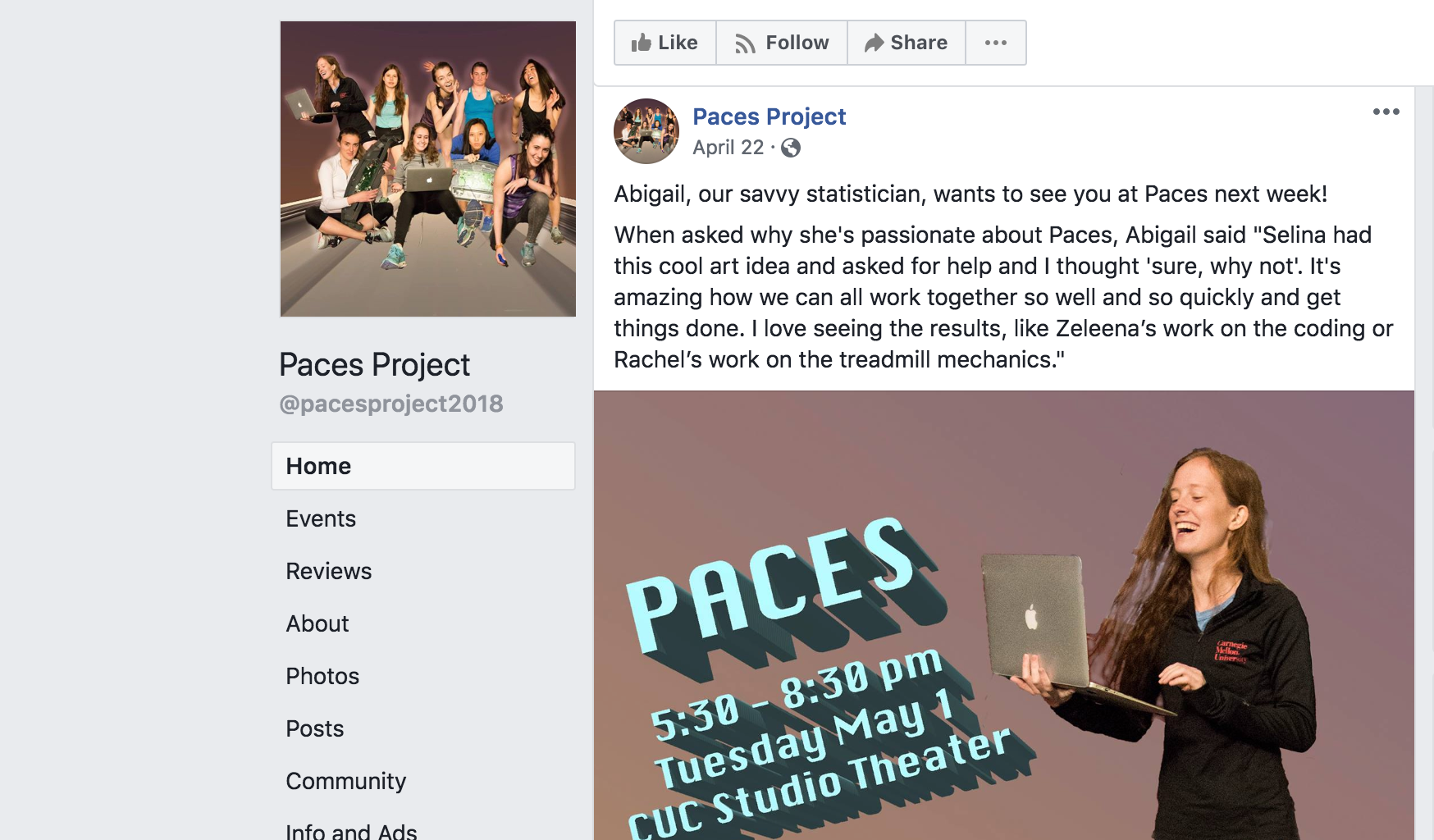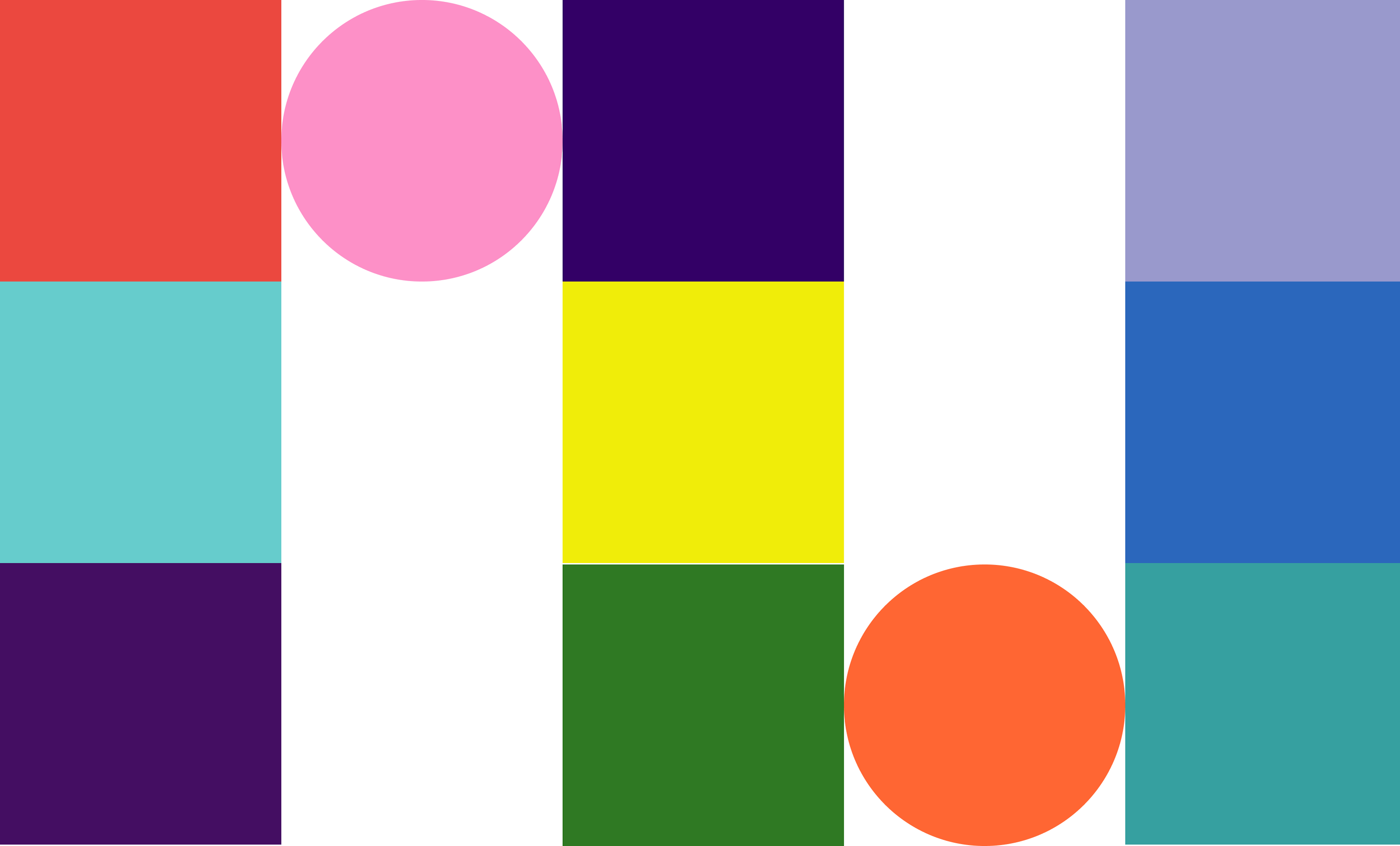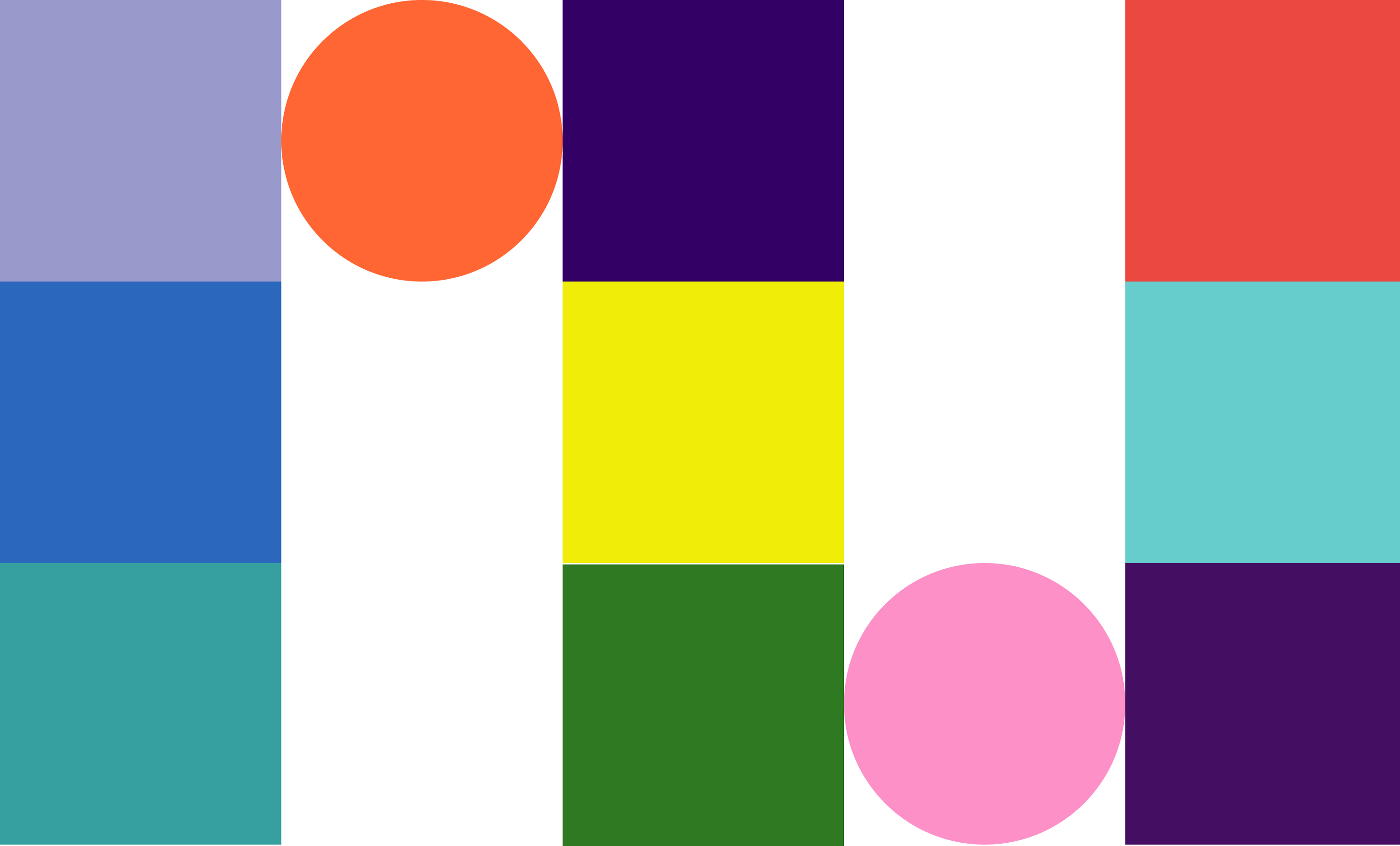Timeline
6 months
Tools
Photoshop, After Effects (including Cinema 4D), InDesign
Team
Selina Lee (BFA ’20)
Zeleena Kearney (ECE BME ’18)
Alli Scibisz (ECE ’19)
Rachel Reolfi (MechE EPP ’20)
Vayda Farino (ChemE BME ’20)
Abigail Levine (Mathematics ’20)
Kate Reilly (Technical Writing ’20)
Brittney Sidwell (CS ’21)
Role
I added value to this project by designing a new way to interact with the treadmill and the screen to encourage a long distance runners mindset, developing instillations user interface, creating a plethora of animations in different styles for use in the video game as well as on the side screens, and co-developing and implementing a successful marketing campaign for this CMU funded project by appealing to the multidisciplinary nature of the work.
“Paces” is an artistic approach to internalize the nature of play against society’s fixation on results and winning. Inspired by characteristics of long distance running, “Paces” takes the form of an interactive video game and film installation, involving creative elements of computer programming, data visualization, mechanical engineering, animation, documentary, etc. Through research and analysis of Carnegie Mellon University’s Varsity Cross Country Teams, the narrative of “Paces” extracts the motivations and allure within distance running by providing both a curated interpretation and physical implementation of the action. Viewers immerse themselves in a mediation of the routine activity while engaging with other participants during the display. In regard to society’s general attitude towards performance and competition, Paces provides a separate alleyway which repudiates the notion of winning, allowing for appreciation of the present experience instead of a goal-oriented experience.
Working on a multidisciplinary team allows one to leverage a wide range of skills to create something that would not have been possible without such diversity. My contributions to this project where in the fields of design, animation, and marketing.
Process.
Empathize
To begin the process by empathizing with our users we had to understand who the average visitor of the instillation would be, a college student, and their relationship with running. Those attending the instillation, are most likely used to the favoring of direct competition and the laziness associated with video games now. The other side we needed to empathize with was the people who would be attending the instillation. They would not be as willing as we were to run for a long time.
Define
We wanted to manifest the mindset of a long distance runner, but initially we did not know what that was. To understand this further we held a group discussion with our team, a group of long distance runners, to just talk about our feelings about running. Hearing others thoughts on the runners mindset.
I helped lead the group discussion to strive to uncover the main themes that as a group we wanted to convey about running by dissecting and comparing personal experiences. Eventually, that lead to the discovery of several themes that we formed into a goal for the project.
KEY INSIGHTS
At its core running is not a sport that about winning, but one about trying ones best.
Running is a way to release emotional stress, but it is also an activity that can be made stressful.
The movement and exploratory nature of running is both meditative and rewarding.
From this insight we began to create an experience that encourages trying one's best without the incentive of winning that includes a treadmill & screen, isolation, and forward motion, in a way that accounts for the users experience.
Ideate
With those definitions in mind, Selina and I came up with 100 different ways we though this could be accomplished such as: using heart rate to force the runner to the point of a "runners high", having multiple people on the treadmill to reinforce the pack feeling, or removing all of them all together and just having people look at it.
.
Prototype/Test
While we could not really build functional prototypes, we could test the ideas on our average user conceptually, by asking them how they felt about the concept.
While some ideas were only limited by scientific research (using heart rate to force the runner to the point of a "runners high") or safety concerns (having multiple people on the treadmill, forcing the treadmill to go faster or slower without notification or consent of the runner).
The majority of cuts came from reevaluating the ideas with empathy for the installations visitors. We wanted to force them to run on two treadmills, or run for an hour, two things the majority of people would be too intimidated to casually do. We expected them to state their easy pace, and preform accurately in a time trial.
Final Design
Once we understood these limitations, the final game design was reached.
Design Criteria
It would have one treadmill on which the participant would control the pace, which would not be shown to eliminate any way for external competition among participants to arise.
As one moved faster different objects would appear on the screen, which would mimic the movement of the runner, through several different locations. This creation of objects is how we would internally incentivize running faster without any 'winning'.
There would be a screen on either side of the treadmill playing a video to create an immersive experience that discouraged unrelated distraction.
User Interface
The Treadmill Controls
In accordance with the idea of internal competition. I insisted upon numbers being removed from the treadmill, leaving only the up down arrows and a go stop button.
.


Visual Aesthetic
Then the visual feel of the project was defined by Selina and I though me producing different videos like the one below, and us deciding upon what way the movement and colors felt best.
.
This is a sketchy video I made early on in the process to test out different feels of movement
Animation
.The game was filled with objects that I animated. There were two distinct ways of creating such animations one of each is demonstrated below. In the first I used Adobe After Effects (including Cinema 4D at times) to create objects by modifying editing typically still objects and making them move in odd ways. The second was extracting runners from videos taken at track meets to create people that would work through the game. All animations aligned with the visual criteria defined in the design stage.
.



Marketing Campaign
Along with Kate Reilly, I worked on marketing PACES. In our advertisements we used the purple computer feel of the game, as well as lots of personalization. There were nine members of our team and we made different variations of the posters with each persons face on them. The reason we did this is that the team that created this project multidisciplinary and as a result, each of us had different friend groups and people that we individually would be a pull to come. We extended this approach by writing little things to share about the person who was in the picture.
To promote these advertisements, we used facebook to pay for promotions, plastered the school with the posters, and chalked the ground with invitations.



Reflection
Ultimately, this experience was a valuable as it let me utilize a wide skillset and experience the pitfalls of actually creating and promoting a seemingly far-fetched project teaching me the value of planning and teamwork.
Additionally, it opened my eyes to the potential of other disciplines. It was because of this that I learned SolidWorks, Arduino, and several other physical prototyping programs.

